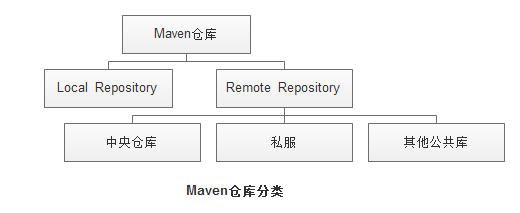Maven入门2-pom.xml文件与settings.xml文件
Maven入门2-pom.xml文件与settings.xml文件
本文内容来源于官网文档部分章节,settings.xml文件:参考http://maven.apache.org/settings.html,pom.xml文件参考:http://maven.apache.org/guides/introduction/introduction-to-the-pom.html。
http://maven.apache.org/pom.html;一个是POM的简单介绍,一个是详细介绍。
下面针对几个主要的地方做介绍:
转载请注明出处:http://www.cnblogs.com/liun1994/
1、settings.xml文件
settings.xml文件包含多个不同的标签,用来配置maven的执行,包含两个settings.xml文件,一个在${user.home}/.m2/settings.xml目录下,一个在${maven.home}/conf/settings.xml目录下;第一个称为global settings,第二个称为user settings,如果两个都存在的话,将会合并,并以user settings为主导;settings.xml文件的内容通过配置的环境变量来解释执行。下面是settings.xml文件的一个预览:
<settings xmlns="http://maven.apache.org/SETTINGS/1.0.0"
xmlns:xsi="http://www.w3.org/2001/XMLSchema-instance"
xsi:schemaLocation="http://maven.apache.org/SETTINGS/1.0.0
https://maven.apache.org/xsd/settings-1.0.0.xsd">
<localRepository/>
<interactiveMode/>
<usePluginRegistry/>
<offline/>
<pluginGroups/>
<servers/>
<mirrors/>
<proxies/>
<profiles/>
<activeProfiles/>
</settings>
转载请注明出处:http://www.cnblogs.com/liun1994/
1)简单值配置:
<settings xmlns="http://maven.apache.org/SETTINGS/1.0.0"
xmlns:xsi="http://www.w3.org/2001/XMLSchema-instance"
xsi:schemaLocation="http://maven.apache.org/SETTINGS/1.0.0
https://maven.apache.org/xsd/settings-1.0.0.xsd">
<localRepository>${user.home}/.m2/repository</localRepository><!-- 系统本地仓库地址 -->
<interactiveMode>true</interactiveMode><!-- 是否允许与用户的输入进行互动,默认true -->
<usePluginRegistry>false</usePluginRegistry><!-- 是否允许使用${user.home}/.m2/plugin-registry.xml文件管理插件的版本,默认为false -->
<offline>false</offline><!-- 是否允许在离线模式运行,这在无法与远程仓库连接时很有用 -->
...
</settings>
2)插件组:
pluginGroup可以有好多个,默认包括org.apache.maven.plugins和org.codehaus.mojo。
<settings xmlns="http://maven.apache.org/SETTINGS/1.0.0"
xmlns:xsi="http://www.w3.org/2001/XMLSchema-instance"
xsi:schemaLocation="http://maven.apache.org/SETTINGS/1.0.0
https://maven.apache.org/xsd/settings-1.0.0.xsd">
...
<pluginGroups>
<pluginGroup>org.mortbay.jetty</pluginGroup>
</pluginGroups>
...
</settings> 配置插件之后可以在命令行使用:mvn jerry:run
3)servers配置
下载和部署的仓库,由POM文件的repositories和distributionManagement标签定义,然而某些设置却不能在这个文件下设置;比如username,password等,这些信息在服务器的settings.xml文件中配置。
<settings xmlns="http://maven.apache.org/SETTINGS/1.0.0"
xmlns:xsi="http://www.w3.org/2001/XMLSchema-instance"
xsi:schemaLocation="http://maven.apache.org/SETTINGS/1.0.0
https://maven.apache.org/xsd/settings-1.0.0.xsd">
...
<servers>
<server>
<id>server001</id><!-- 与mirror/repository的id匹配 -->
<username>my_login</username>
<password>my_password</password>
<privateKey>${user.home}/.ssh/id_dsa</privateKey>
<passphrase>some_passphrase</passphrase>
<filePermissions>664</filePermissions>
<directoryPermissions>775</directoryPermissions>
<configuration></configuration>
</server>
</servers>
...
</settings>
4)mirrors
更多关于mirrors的配置可参考此处:http://maven.apache.org/guides/mini/guide-mirror-settings.html
如果是国内的网,可能会遇到无法访问的问题,这时可换成国内的mirror。
<settings xmlns="http://maven.apache.org/SETTINGS/1.0.0"
xmlns:xsi="http://www.w3.org/2001/XMLSchema-instance"
xsi:schemaLocation="http://maven.apache.org/SETTINGS/1.0.0
https://maven.apache.org/xsd/settings-1.0.0.xsd">
...
<mirrors>
<mirror>
<id>planetmirror.com</id> <!-- 当连接此mirror时使用server的配置 -->
<name>PlanetMirror Australia</name>
<url>http://downloads.planetmirror.com/pub/maven2</url>
<mirrorOf>central</mirrorOf>
</mirror>
</mirrors>
...
</settings>
其他的一些配置,可去官网链接查询!
2、pom.xml文件
1)简单介绍
POM文件是Project Object Model的简称,它包含了使用Maven进行项目管理的详细信息,它包含许多默认的值,比如编译路径默认为:target;源码路径src/main/java;测试路径:src/test/java。
所有的pom.xml文件都继承Super POM,Super POM是Maven默认的Pom,下面是内嵌POM的一个预览,版本为3.0.4:
默认POM配置了一些路径,插件,默认打包方式为jar。转载请注明出处:http://www.cnblogs.com/liun1994/
<project>
<modelVersion>4.0.0</modelVersion> <repositories>
<repository>
<id>central</id>
<name>Central Repository</name>
<url>http://repo.maven.apache.org/maven2</url>
<layout>default</layout>
<snapshots>
<enabled>false</enabled>
</snapshots>
</repository>
</repositories> <pluginRepositories>
<pluginRepository>
<id>central</id>
<name>Central Repository</name>
<url>http://repo.maven.apache.org/maven2</url>
<layout>default</layout>
<snapshots>
<enabled>false</enabled>
</snapshots>
<releases>
<updatePolicy>never</updatePolicy>
</releases>
</pluginRepository>
</pluginRepositories> <build>
<directory>${project.basedir}/target</directory>
<outputDirectory>${project.build.directory}/classes</outputDirectory>
<finalName>${project.artifactId}-${project.version}</finalName>
<testOutputDirectory>${project.build.directory}/test-classes</testOutputDirectory>
<sourceDirectory>${project.basedir}/src/main/java</sourceDirectory>
<scriptSourceDirectory>src/main/scripts</scriptSourceDirectory>
<testSourceDirectory>${project.basedir}/src/test/java</testSourceDirectory>
<resources>
<resource>
<directory>${project.basedir}/src/main/resources</directory>
</resource>
</resources>
<testResources>
<testResource>
<directory>${project.basedir}/src/test/resources</directory>
</testResource>
</testResources>
<pluginManagement>
<!-- NOTE: These plugins will be removed from future versions of the super POM -->
<!-- They are kept for the moment as they are very unlikely to conflict with lifecycle mappings (MNG-4453) -->
<plugins>
<plugin>
<artifactId>maven-antrun-plugin</artifactId>
<version>1.3</version>
</plugin>
<plugin>
<artifactId>maven-assembly-plugin</artifactId>
<version>2.2-beta-5</version>
</plugin>
<plugin>
<artifactId>maven-dependency-plugin</artifactId>
<version>2.1</version>
</plugin>
<plugin>
<artifactId>maven-release-plugin</artifactId>
<version>2.0</version>
</plugin>
</plugins>
</pluginManagement>
</build> <reporting>
<outputDirectory>${project.build.directory}/site</outputDirectory>
</reporting> <profiles>
<!-- NOTE: The release profile will be removed from future versions of the super POM -->
<profile>
<id>release-profile</id> <activation>
<property>
<name>performRelease</name>
<value>true</value>
</property>
</activation> <build>
<plugins>
<plugin>
<inherited>true</inherited>
<artifactId>maven-source-plugin</artifactId>
<executions>
<execution>
<id>attach-sources</id>
<goals>
<goal>jar</goal>
</goals>
</execution>
</executions>
</plugin>
<plugin>
<inherited>true</inherited>
<artifactId>maven-javadoc-plugin</artifactId>
<executions>
<execution>
<id>attach-javadocs</id>
<goals>
<goal>jar</goal>
</goals>
</execution>
</executions>
</plugin>
<plugin>
<inherited>true</inherited>
<artifactId>maven-deploy-plugin</artifactId>
<configuration>
<updateReleaseInfo>true</updateReleaseInfo>
</configuration>
</plugin>
</plugins>
</build>
</profile>
</profiles> </project>
最小化配置:
<project>
<modelVersion>4.0.0</modelVersion>
<groupId>com.mycompany.app</groupId>
<artifactId>my-app</artifactId>
<version>1</version>
</project>
如果使用最小化配置,没有指定repositories,那么将会使用Super POM的配置下载库及插件,即http://repo.maven.apache.org/maven2。
几个例子:Maven中有继承和聚合的概念,对应两个标签:parent, module。
Example1:
目录结构:
.
|-- my-module
| `-- pom.xml
`-- pom.xml
配置:
<project>
<parent>
<groupId>com.mycompany.app</groupId>
<artifactId>my-app</artifactId>
<version>1</version>
</parent>
<modelVersion>4.0.0</modelVersion>
<artifactId>my-module</artifactId>
</project> Example2:
目录结构:
.
|-- my-module
| `-- pom.xml
`-- parent
`-- pom.xml
配置:
<project>
<parent>
<groupId>com.mycompany.app</groupId>
<artifactId>my-app</artifactId>
<version>1</version>
<relativePath>../parent/pom.xml</relativePath>
</parent>
<modelVersion>4.0.0</modelVersion>
<artifactId>my-module</artifactId>
</project>
聚合:
<project>
<modelVersion>4.0.0</modelVersion>
<groupId>com.mycompany.app</groupId>
<artifactId>my-app</artifactId>
<version>1</version>
<packaging>pom</packaging>
<modules>
<module>my-module</module>
</modules>
</project>
详情参考:http://maven.apache.org/guides/introduction/introduction-to-the-pom.html
2)标签预览
共分四类,下面介绍几个比较重要的;
<project xmlns="http://maven.apache.org/POM/4.0.0"
xmlns:xsi="http://www.w3.org/2001/XMLSchema-instance"
xsi:schemaLocation="http://maven.apache.org/POM/4.0.0
http://maven.apache.org/xsd/maven-4.0.0.xsd">
<modelVersion>4.0.0</modelVersion> <!-- The Basics -->
<groupId>...</groupId>
<artifactId>...</artifactId>
<version>...</version>
<packaging>...</packaging>
<dependencies>...</dependencies>
<parent>...</parent>
<dependencyManagement>...</dependencyManagement>
<modules>...</modules>
<properties>...</properties> <!-- Build Settings -->
<build>...</build>
<reporting>...</reporting> <!-- More Project Information -->
<name>...</name>
<description>...</description>
<url>...</url>
<inceptionYear>...</inceptionYear>
<licenses>...</licenses>
<organization>...</organization>
<developers>...</developers>
<contributors>...</contributors> <!-- Environment Settings -->
<issueManagement>...</issueManagement>
<ciManagement>...</ciManagement>
<mailingLists>...</mailingLists>
<scm>...</scm>
<prerequisites>...</prerequisites>
<repositories>...</repositories>
<pluginRepositories>...</pluginRepositories>
<distributionManagement>...</distributionManagement>
<profiles>...</profiles>
</project>
在POM文件中,repositories标签配置去哪下载依赖库及插件,但是如果在settings.xml配置了mirror的话,就会去mirror地址下载,相当于拦截器;
Maven仓库分两类:

repository里存放的都是各种jar包和maven插件。当向仓库请求插件或依赖的时候,会先检查local repository,如果local repository有则直接返回,否则会向remote repository请求,并缓存到local repository。
mirror相当于一个拦截器,它会拦截maven对remote repository的相关请求,把请求里的remote repository地址,重定向到mirror里配置的地址。
<mirrorOf></mirrorOf>标签里面放置的是要被镜像的Repository ID。为了满足一些复杂的需求,Maven还支持更高级的镜像配置:
3、小结
下面是我学习Maven时的步骤,同时也适用于其他技术:
1)搜索相关博客、资料,了解一下概念性的知识;
2)安装与简单配置,阅读官方文档中感兴趣的部分;
3)对于不理解的部分,搜索相关的资料,搞明白;
4)暂时告一段落,下次用到时如果出错,一方面从官方文档找配置,另一方面搜索质量高的博客借鉴。
转载请注明出处:http://www.cnblogs.com/liun1994/
Maven入门2-pom.xml文件与settings.xml文件的更多相关文章
- Maven入门-3.pom文件和settings文件
1.pom.xml文件介绍2.settings.xml文件介绍 1.pom.xml文件介绍 Maven项目的核心是pom.xml,pom(Project Object Model项目对象模型) pom ...
- maven在windows环境下加载settings.xml文件
今天发现maven在windows环境下加载的settings.xml文件是c:下的,就算修改conf下的settings.xml里的<localRepository>给他明确指向也没用.
- Maven的相关问题(一)——settings.xml配置详解
工作中第一次正式接触maven,虽然之前在学习时有遇到过,但是对于maven的认识和理解确实太浅薄,仅仅局限于机械式的操,纸上得来终觉浅,绝知此事要躬行···古人诚不欺我也~ 下面先贴一个找到的一个非 ...
- maven的几个重要配置文件pom.xml、settings.xml;Maven打包生成包含所有依赖的jar包
一个java项目通过maven自动下载依赖时,会涉级读取三个配置文件,分别是项目下的pom.xml 文件 .用户家目录下的.m2/settings.xml 与 maven 全局配置settings.x ...
- Maven中settings.xml文件各标签含义
原文地址:http://www.cnblogs.com/jingmoxukong/p/6050172.html?utm_source=gold_browser_extension settings.x ...
- maven的settings.xml文件
settings.xml是maven的配置文件.一般我们在网上下载的maven包解压以后,conf文件里面的有个setting.xml文件,通常这个settings.xml文件中会有你的本地仓库会在哪 ...
- maven全局配置文件settings.xml详解
概要 settings.xml有什么用? 如果在Eclipse中使用过Maven插件,想必会有这个经验:配置settings.xml文件的路径. settings.xml文件是干什么的,为什么要配置它 ...
- [转]maven全局配置文件settings.xml详解
概要 settings.xml有什么用? 如果在Eclipse中使用过Maven插件,想必会有这个经验:配置settings.xml文件的路径. Paste_Image.png settings.xm ...
- Apache Maven(七):settings.xml
settings.xml 文件中包含settings标签,这个标签可以配置如何去执行Maven.其中包括本地存储库位置,备用远程存储库服务器和身份验证信息等值. 有如下两个位置可能存放这setting ...
随机推荐
- centos7下,解决Apache错误日志文件过大问题
1,日志文件太大问题 第一步:停止Apache服务的所有进程,删除 /var/log/httpd目录下的 error.log.access.log文件 第二步:打开 /etc/httpd/conf ...
- web worker 扫盲篇
什么是woker 官方的解释是这样的: worker是一个对象,通过构造函数Worker创建,参数就是一个js文件的路径:文件中的js代码将运行在主线程之外的worker线程: var jsFileU ...
- js—浅谈方法和思路的重要性(首篇求大佬支持)
js-浅谈方法和思路的重要性 学了这么久的js,我从老师的,同学的代码中发现,老师写的代码比我们的要清楚的很多,基本上没有太多累赘啊,能少的没有少啊等等..... 废话不多说,下面我们来看看这个我的一 ...
- 探讨SQL Server并发处理存在就更新七种解决方案
前言 本节我们来讲讲并发中最常见的情况存在即更新,在并发中若未存在行记录则插入,此时未处理好极容易出现插入重复键情况,本文我们来介绍对并发中存在就更新行记录的七种方案并且我们来综合分析最合适的解决方案 ...
- “海市蜃楼”般的逛街体验——VR全景智慧城市常诚
<史记·天官书>:"海旁蜃气像楼台:广野气成宫阙然." 海市蜃楼,简称蜃景,是一种因为光的折射和全反射而形成的自然现象,是地球上物体反射的光经大气折射而形成的虚像. 2 ...
- Nmap原理-01选项介绍
Nmap原理-01选项介绍 1.Nmap原理图 Nmap包含四项基本功能:主机发现/端口扫描/版本探测/操作系统探测.这四项功能之间存在大致的依赖关系,比如图片中的先后关系,除此之外,Nmap还提供规 ...
- node.js入门系列(一)--Node.js简介
什么是NodeJS JS是脚本语言,脚本语言都需要一个解析器才能运行.对于写在HTML页面里的JS,浏览器充当了解析器的角色.而对于需要独立运行的JS,NodeJS就是一个解析器. 每一种解析器都是一 ...
- 【论文:麦克风阵列增强】Microphone Array Post-Filtering For Non-Stationary Noise Suppression
作者:桂. 时间:2017-06-08 08:01:41 链接:http://www.cnblogs.com/xingshansi/p/6957027.html 原文链接:http://pan.ba ...
- [codeforces631E]Product Sum
E. Product Sum time limit per test: 1 second memory limit per test: 256 megabytes input:standard inp ...
- Java IO学习笔记四
内存操作流 之前的所有的流操作都是针对文件的,但是有时候只是想要实现数据间转换,此时如果我们想要创建一个文件然后再删除文件,那样显得有点麻烦,因此此时的内存操作流就显得很适合这类的操作,因为它只是在内 ...
